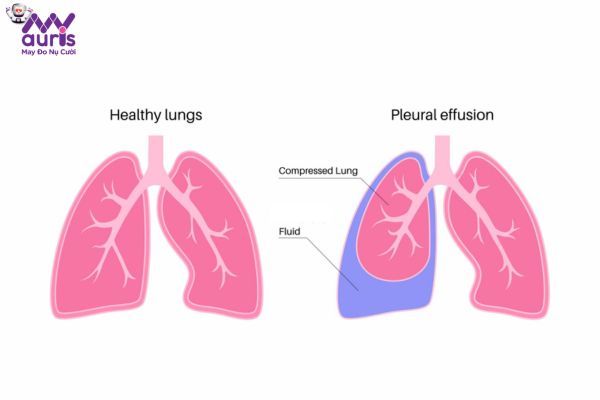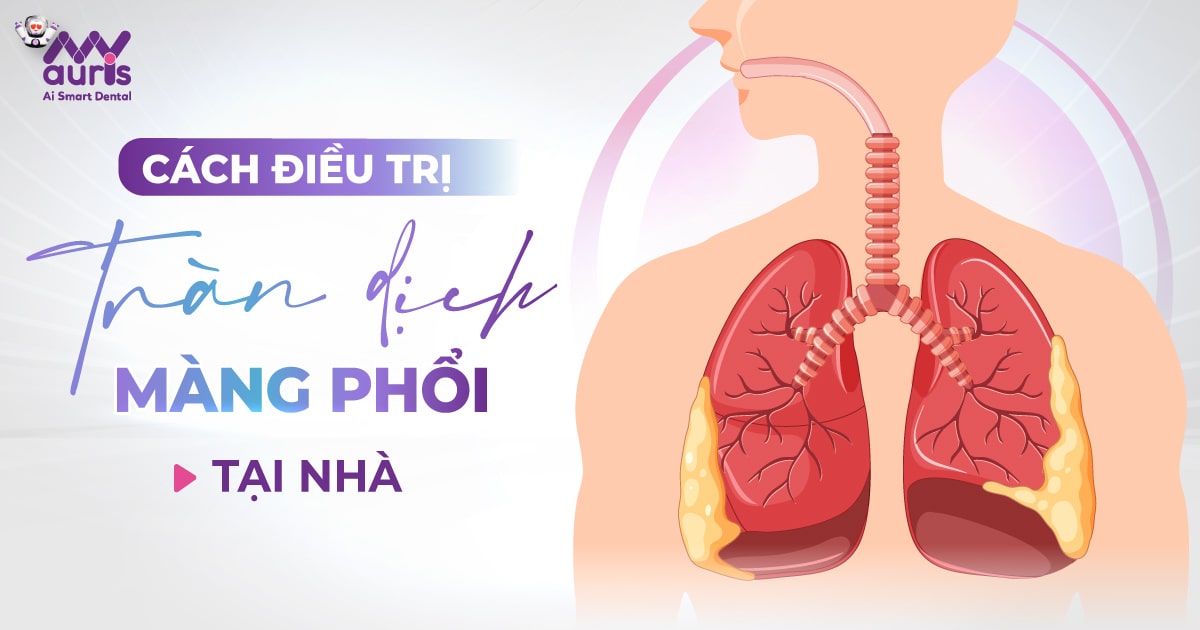The lungs are very important internal organs, they are the center of respiratory activity in the human body. Pleural effusion is a complex and dangerous internal respiratory disease. Timely and proper treatment will help the patient recover quickly and reduce the possibility of recurrence. In addition to medical treatment, patients need supportive treatment at home. So what does it take to treat pleural effusion at home? Let’s find out and apply it most accurately with My Auris!
Answers to ways to treat pleural effusion at home
Implementing the following home treatment for pleural effusion can help patients control uncomfortable symptoms caused by the disease, while also preventing the possibility of recurrence after treatment. Specifically:

Take medicine according to instructions and indications from the doctor
Patients undergoing treatment for pleural effusion will always be prescribed certain medications by the doctor such as:
- Antibiotics to help prevent bacterial infections
- Anti-inflammatory medication that can reduce inflammation
- Patients with heart failure, hydronephrosis,… causing pleural effusion may be prescribed diuretics
- Medications related to pain relief and fever reduction
- Cough suppressants
All patients will have to use the medicine and dosage according to the doctor’s instructions. During the course of taking the medication, if you have side effects, you will need to immediately tell your doctor to change to a more suitable medication.
Rest properly
A One of the effective ways to treat pleural effusion at home is to maintain a reasonable rest regimen. The disease has a serious impact on the respiratory system, many patients suffer from coughing up blood, chest pain, difficulty breathing, and fatigue. Therefore, the patient will need to pay attention to resting a lot and should not do heavy physical activities while the patient has not fully recovered.
Scientific diet and provides a lot of nutrition
Nutrition will determine Determine the body’s ability to recover from illness. For patients with pleural effusion, starches, sugars, fats, processed foods, greasy fried foods, etc. need to be limited by the patient.
At the same time, stimulants such as beer, alcohol, coffee, cigarettes,… also need to be removed from the menu. Instead, easy-to-digest foods and healthy foods will be more beneficial to the patient’s health.
Practice deep breathing

The patient needs Practice deep breathing as one of the ways to treat pleural effusion at home. Patients can exercise in the morning or at any time of the day. When exercising, try to breathe deeply and hold your breath as long as possible. Next, exhale completely. The patient can repeat the exercise about 10 times per hour. Doctors can also provide patients with some breathing aids.
Appropriate and gentle exercise
When treating pleural effusion, doctors always advise patients not to exercise heavily. After treatment, exercising with gentle exercises will be very helpful. This can help patients regulate blood pressure, improve respiratory ability,…
Do not use tobacco
Smoking is the killer. Smoke causes damage to the respiratory system. With pleural effusion, cigarette smoke can cause damage to the lung structure, increasing the risk of infection or lung congestion. Not only do patients need to quit smoking, but they also have to stay away from cigarette smoke from the surrounding environment.
Methods of treating pleural effusion at the hospital
Patients will not be allowed to arbitrarily apply pleural effusion treatment at home without performing treatment at the hospital. Important scientific treatment methods include:
- Thorax aspiration, supports definitive diagnosis and helps patients reduce shortness of breath when the amount of fluid in the pleural cavity is high.
- Pleural drainage is a small surgery to place a drainage tube through the skin into the pleural cavity, to help fluid drain out.
- Carry out medical treatment according to each cause of the disease. Pleural effusion caused by infection will be treated with antibiotics. Specifically, if the cause is tuberculosis, anti-tuberculosis drugs will be used; if the cause is cancer, surgery or radiation therapy or chemotherapy will be used…
- Accompanied by supportive treatments such as rest, scientific nutrition, treatment of chest tightness – shortness of breath, fever, physical therapy,…
After discharge from the hospital, the patient will still need to perform some treatments for pleural effusion at home to quickly recover as well as prevent recurrence of the disease.
Instructions for caring for patients with pleural effusion at home
Treatment of pleural effusion at home will need to be combined with proper care, which plays an equally important role. Because this is the time that can easily lead to complications, especially wound infection. For patients who have surgery, intervention to treat pleural effusion will take about 2 to 4 weeks to recover. At this time, patients need to pay attention to:

- Place the patient in a position with the head about 20 to 40 degrees higher than the body, preferably on the side of the effusion.
- Creates conditions for the patient to avoid exertion. Family members should place and keep necessary items within reach of the patient.
- Continue the process of breathing exercises, coughing exercises, and expectoration (if any). Also combine with physical therapy exercises according to your doctor’s recommendations.
- The diet should start from thin to thick. In the first days, the patient should be fed stew, porridge, soup, etc. with high nutritional content and low fat.
When should a patient see a doctor?

During the process Using home remedies to treat pleural effusion, if the following problems are detected, the patient needs to see a doctor as soon as possible:
- Difficulty breathing or breathing faster than normal.
- There is a feeling of tightness in the chest area, severe pain may appear.
- The patient coughs a lot, has difficulty breathing, and the chest pain not only does not decrease but also becomes more serious.





